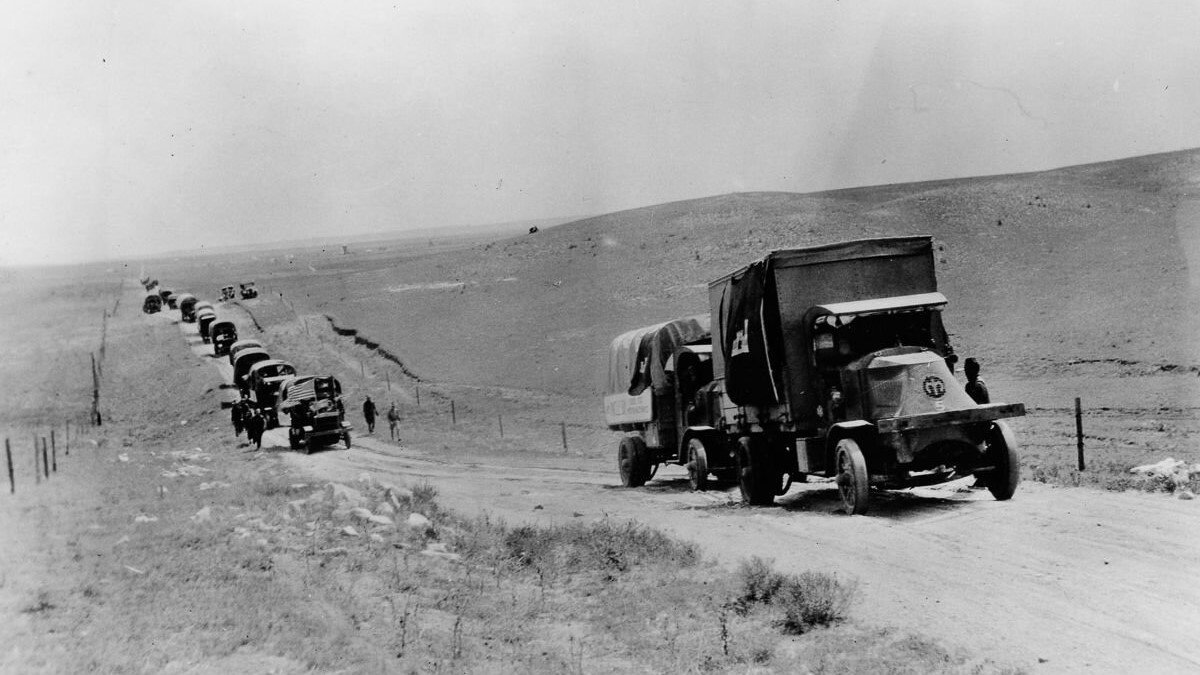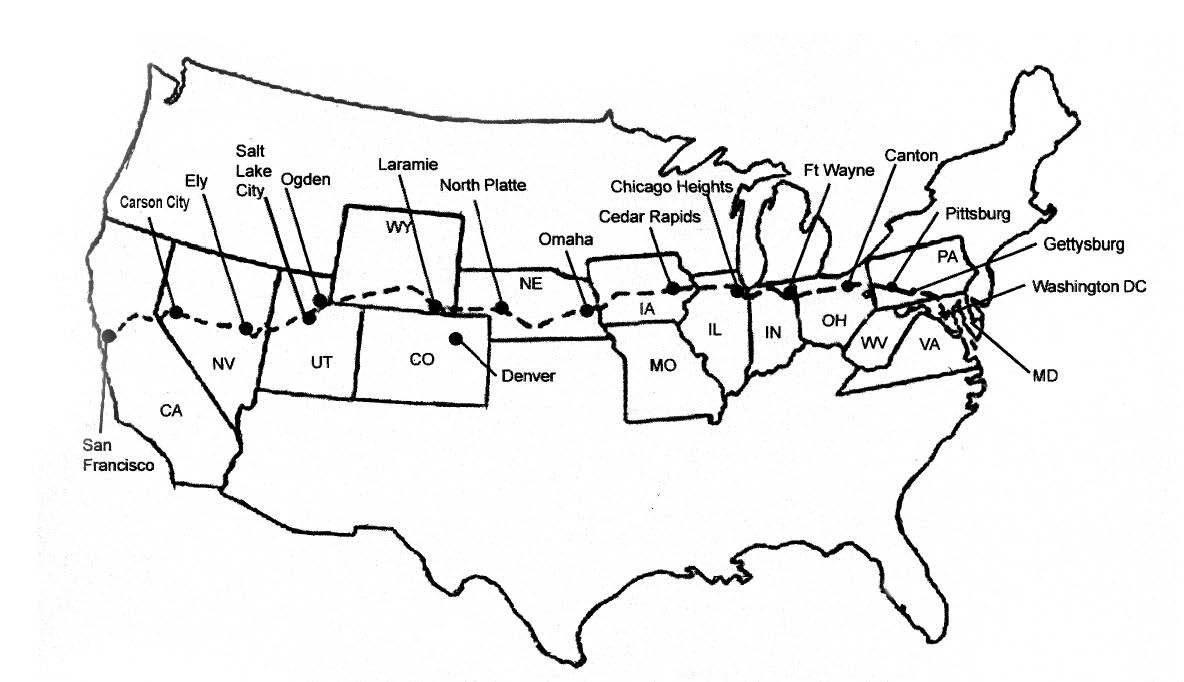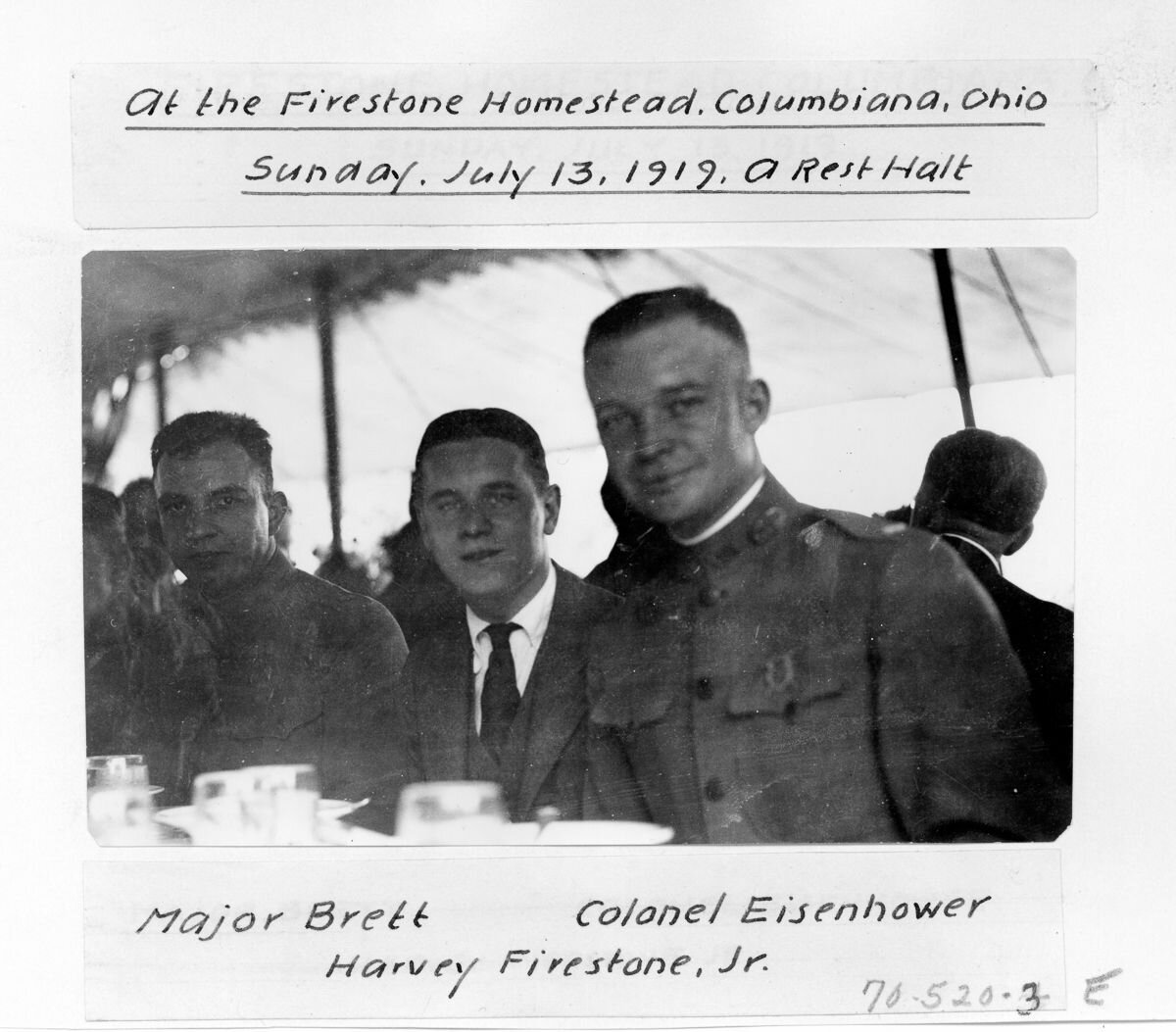Authors:
Historic Era: Era 7: The Emergence of Modern America (1890-1930)
Historic Theme:
Subject:
July/August 2020 | Volume 65, Issue 4


Authors:
Historic Era: Era 7: The Emergence of Modern America (1890-1930)
Historic Theme:
Subject:
July/August 2020 | Volume 65, Issue 4

July 7, 1919 — Three days after the Fourth of July, at the Ellipse fronting the White House, a convoy of 81 vehicles lined up, facing west. Flags flew. Bands played. The Secretary of War hailed “the beginning of a new era.” Finally, at 11:15 a.m., the convoy was ready for its perilous, uncharted journey. The destination — San Francisco.
For the previous half century, trains traveled coast-to-coast in just a week. But by truck, the 3,200-mile slog was expected to take. . . two months. With a roar of engines, cheers from the crowd, and smiles from the 250 volunteer adventurers, the Transcontinental Motor Convoy set out across America.
This wild journey would be a historical footnote but for one army officer along for the ride. His name was Eisenhower.

Ike, as everyone called him, was 28. The previous autumn, he had just missed World War I, the armistice coming a week before he was to ship out for France. Now he saw himself “in the years ahead putting on weight in a meaningless chair-bound assignment, shuffling papers and filling out forms.” So when the army sent its motor pool coast-to-coast, Ike volunteered, “partly for a lark, and partly to learn.” What he learned would later transform modern America.
By 1919, cars were common on American roads, but those roads turned mean at city limits. A patchwork of “seedling miles” had been paved by a Good Roads Movement, but the rest of America was hard travelin’. Mile after mile was unpaved, riven with mud and potholes, trenches and debris.
Crossing this wilderness, throughout that summer a century ago, came the convoy. Along with trucks, the two-mile parade included Packard cars, Harley-Davidson motorcycles, and support vehicles — mobile kitchens, a blacksmith van for forging engine parts, truck full of tires, water, and gasoline, and the most crucial vehicle, a tank to tow any vehicle out of a ditch.
The first dozen days, tracing the 19th century Lincoln Highway, were routine. Sixty, seventy miles, with smooth gravel through Pennsylvania, Ohio, and Indiana. But at the Illinois line, the trouble began.

For the rest of the journey, each day’s log reads like an auto parts catalog. Broken crankshafts. Worn out magnetos. Blown gaskets, leaky radiators, “carburetor trouble. . .”
Each night told a different story. By late July, the convoy was national news. In small towns, Ike and his colleagues were paraded down